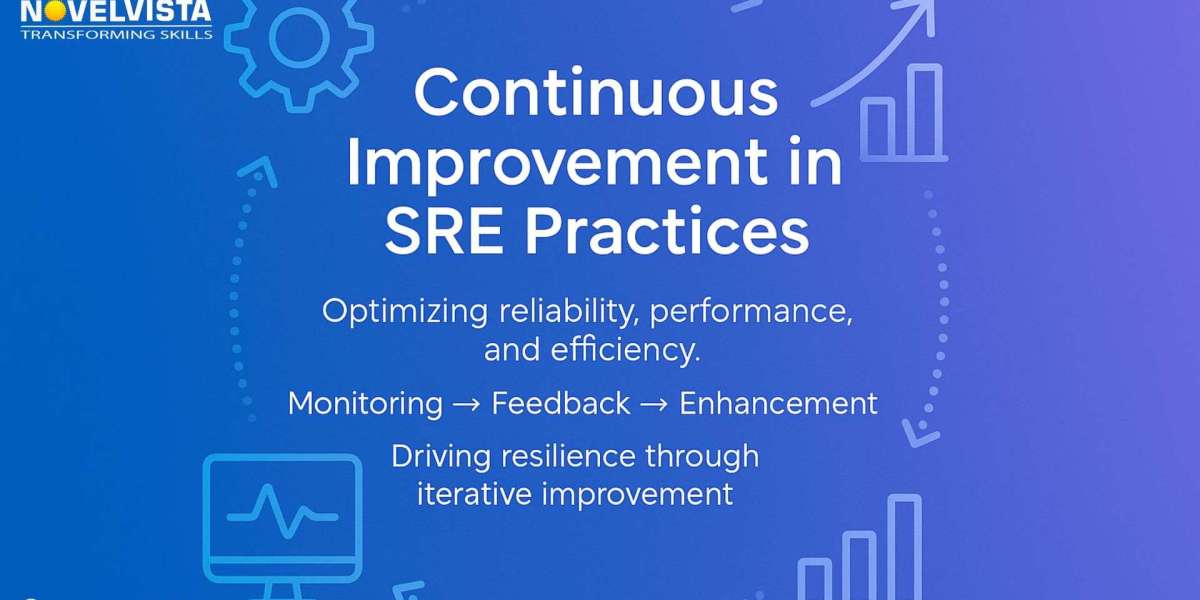In today’s fast-paced digital world, organizations rely heavily on robust and highly available systems. Site Reliability Engineering (SRE) has emerged as a key discipline to ensure operational reliability, scalability, and efficiency of IT systems. A fundamental principle of SRE is continuous improvement, which ensures that systems not only function efficiently but also evolve over time to meet increasing demands and expectations.
- The Importance of Continuous Improvement in SRE
Continuous improvement in SRE focuses on enhancing system reliability, optimizing performance, and reducing operational risks. It is rooted in the philosophy that no system is perfect, and ongoing monitoring, analysis, and refinement are necessary to prevent failures and minimize downtime. By continuously evaluating systems, SRE teams can proactively identify potential bottlenecks, implement automation, and refine processes to increase efficiency.
- Key Practices for Continuous Improvement
- Monitoring and Observability: SRE teams rely on comprehensive monitoring and observability tools to gather actionable insights. Metrics, logs, and traces provide visibility into system performance and help detect anomalies before they escalate into critical issues. Continuous improvement requires refining these tools to ensure relevant data is captured efficiently.
- Error Budgets and SLOs: Error budgets and Service Level Objectives (SLOs) are at the heart of SRE methodology. By analyzing error budget consumption, teams can balance innovation and reliability. Continuous improvement involves reviewing SLOs periodically, adjusting thresholds, and implementing measures to prevent repeated failures.
- Incident Management and Post-Mortems: Handling incidents effectively is crucial for system reliability. Post-incident reviews, or blameless post-mortems, allow SRE teams to learn from failures without assigning blame. This process identifies root causes, leading to actionable changes in infrastructure, deployment processes, or operational procedures.
- Automation and Tooling: Manual interventions are prone to errors and inefficiencies. Automation is a cornerstone of SRE practices, reducing human error and freeing teams for higher-value tasks. Continuous improvement entails regularly evaluating existing scripts, CI/CD pipelines, and monitoring tools to identify opportunities for better automation.
- Capacity Planning and Scalability: Systems need to scale efficiently as traffic grows. SRE teams continuously analyze load patterns, optimize resource allocation, and implement predictive scaling mechanisms. Regularly updating capacity planning ensures systems remain resilient under changing conditions.
- Benefits of Continuous Improvement in SRE
Continuous improvement provides measurable benefits to organizations. These include higher system uptime, reduced incident response times, more predictable service delivery, and improved customer satisfaction. Furthermore, it encourages a culture of learning, collaboration, and innovation within teams, fostering long-term operational excellence.
- Role of SRE Certification in Continuous Improvement
SRE certification, such as the SRE Foundation Certification, plays a crucial role in reinforcing continuous improvement practices. Certification equips professionals with a structured understanding of SRE principles, best practices, and industry-standard methodologies. Certified SREs are better prepared to implement effective monitoring, incident management, and automation strategies. Moreover, organizations benefit from certified professionals who can drive operational improvements, optimize reliability processes, and mentor teams to adopt a culture of continuous improvement.
- Conclusion
Continuous improvement is not just a process; it is a mindset that empowers SRE teams to enhance system reliability and operational efficiency. By embracing monitoring, automation, post-mortems, and proactive planning, organizations can achieve higher availability and resilience. Investing in SRE Practitioner Certification ensures that professionals have the skills, knowledge, and best practices required to implement continuous improvement effectively. In an era where system downtime can have significant business impacts, continuous improvement in SRE practices is not optional—it is essential.



